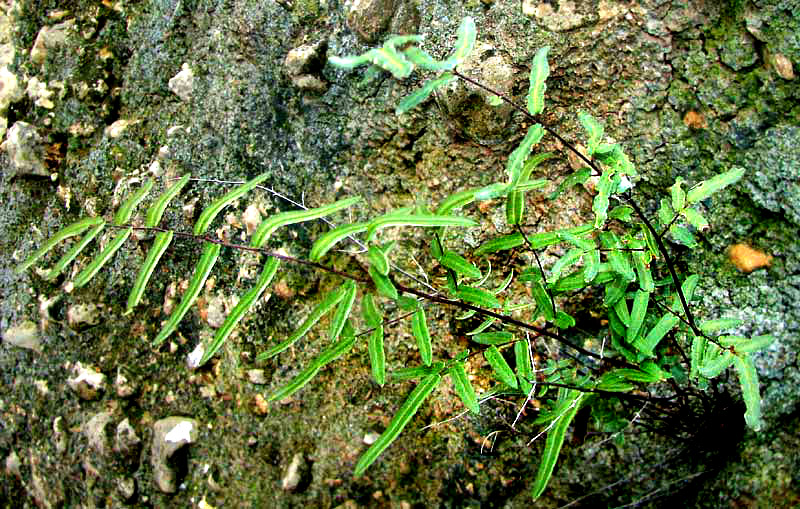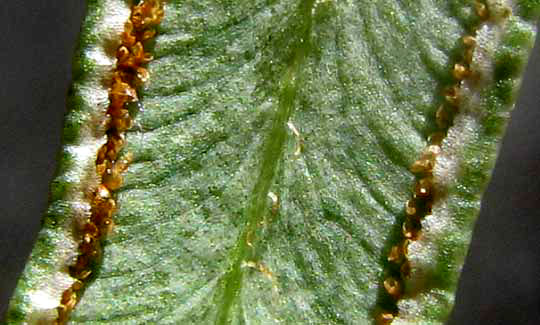Excerpts from Jim Conrad's
Naturalist Newsletter

from the February 3, 2013 Newsletter issued from the valley of the Dry Frio River in northern Uvalde County, southwestern Texas, on the southern border of the Edwards Plateau; elevation ~1750m (~5750 ft); N29.62°, W99.86°; USA
PURPLE-STEM CLIFFBRAKE
This week, growing from a cliff face along the river another limestone-loving fern species turned up surrounded by several Alabama Lipferns. You can see its unusual, twice-pinnate fronds with their long, slender terminal pinnae, and dark purple, nearly black petioles and rachises as shown above.
This is a species I know well from limestone areas back in Kentucky and Appalachia in general. It's the Purple-stem Cliffbrake, PELLAEA ATROPURPUREA, found on limestone outcrops throughout most of the eastern and south-central US, and all through Mexico into Guatemala.
The "brake" in the name cliffbrake doesn't arise from the fact that cliffbrakes break up rocks in the cliffs they inhabit, but from the use of the word "brake" in English back in the 1300s, when it was used to apply to ferns in general. That word had been introduced into the British Isles by colonizing Vikings, even today the Danish word for fern being bregne.
Fifteen species of cliffbrakes, genus Pellaea, are treated in the online Flora of North America and our Purple-stem one is by far the most widely distributed and best known. In our area we have other endemic and mostly Mexican species I'll be looking for.
Cliffbrakes belong to the same fern family as the lipferns, and as such they also bear their spore-producing, tiny, baglike sporangia inside the fronds' turned-under pinnae margins, as shown below in a close-up of some of our Purple-stem Cliffbrake's pinnae:

Each of the tiny, brown, spherical sporangia peeping from beneath the turned-under margins contain 32 spores, so you can see that fern spores really are microscopic things, and it's amazing how a single spore that germinates into a prothallus that gives rise to a whole fern.
It's reported that traditionally infusions or "teas" of Purple-stem Cliffbrake were used by certain indigenous people in California to "flush the kidneys" and "thin the blood." Dr. John Scudder in his 1870 book Specific Medication and Specific Medicines asserts that an alcohol tincture of the plant "... exerts a marked influence upon the excretory apparatus, controlling diarrhoea, dysentery, night sweats, hemorrhages, etc."